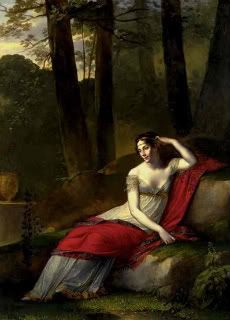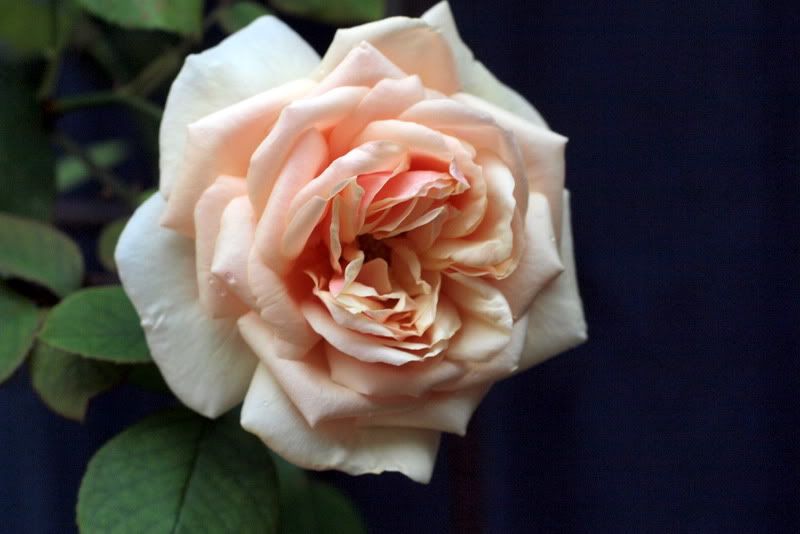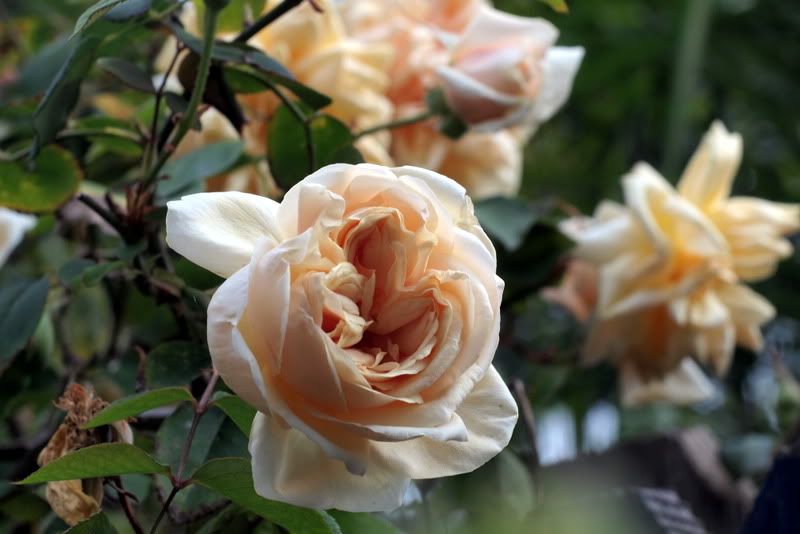Ever since I found a souvenir of a lost rose while digging last fall, I’ve intended to tease out my complex relationship with roses (aka blog about it.) The souvenir was the crumpled, muddied tag of the tea rose ‘Souvenir Pierre de Notting.’ Unearthing the faded remains of a once flourishing plant, I was stricken by the uncountable sums of roses that have passed through my garden.
There was the beautiful 20-foot monster ‘Cerise Bouquet,’ armed to the teeth, that I cut back and dug up after a year of increasingly nervous observation in my own garden, then inflicted on an unsuspecting neighbor: “Here’s a pretty rose I don’t have room for. Gotta go!“
There were the Austin roses, named for Shakespearean characters (Othello) and English industrialists (Abraham Darby) and characters from Hardy (Jude the Obscure), promising the scent and form of old roses but with repeat bloom and disease resistance. (I will vouch for the scent and some repeat bloom.)
There was an extended fling with the hybrid musks, a very fine, long-limbed class of roses. A prolonged and deep infatuation with the tea roses, a class dating back to the 1800s, arguably the best for zone 10, where the cabbagy centifolias and purply gallicas refuse to grow because the summer party lasts too long here, and they don’t get their needed winter rest. A stray Bourbon occasionally wandered into the garden, and once or twice a hybrid perpetual, the latter bringing new meaning to “finicky.”
Enthusiasts will always assert that wrong choices are at the back of every burnt-out rose grower, that they just haven’t found the right rose yet.
Not so, says, Tom Fischer, who in late January guest-ranted on Garden Rant, making no secret of his disdain for roses, inciting the equivalent of a five-car pile-up on Gardenrant,
a happenstance usually reserved for searing discussions concerning lawns and whether or not to remove them. Mr. Fischer made it clear he just didn’t plain like the looks of them.
The subject of roses, whether to include or banish them from gardens, is a topic that can arouse vociferous debate among gardeners. I can think of no other plant as controversial, and it is a testimony to their hold over our imagination that we feel compelled to trumpet our allegiance or publicly admit defection from the cause of the queen of flowers.
Garden designer Michelle Derviss wrote in her blog Garden Porn just a couple days after the Garden Rant post of the travails of professionally maintaining a formal rose garden in Northern California. No love lost there either.
Here in Southern California, roses aren’t the malingers and valetudinarians so often complained of in colder or more humid zones. Here they are robust, long-blooming. In fact, they are downright ubiquitous. They may rust or mildew, but there are no Japanese beetles to contend with. That sawfly larvae will chew blistery-looking holes in the leaves is a given, but I’ve never had the dreaded “black spot.” Other than the climber Chromatella that I lost to crown gall, most roses are expelled from my garden in a fit of irritability, a violent expulsion that more often than not occurs sometime between November and February. The delicate tracery of the leafless branches of a deciduous tree against winter sky is a welcome sight. A rose in anything but full bloom and leaf is, conversely, just not worth looking at.
I’ve never been one to shy from ruinously time-consuming garden tasks. Even pruning has its zen moments. For me, the unhappiness started when I began to pretend I could have a garden with roses and lots of other plants too. Mine would not be a “rose garden” per se, but a generalist’s garden, also filled with small trees and shrubs, grasses and succulents.
This was wishful, magical thinking, a mode of thought gardeners excel at, and the queen soon put her foot down and demanded an oath of loyalty to her and her alone.
The eye is riveted on a rose in a garden, whether in or out of bloom. (Especially out of bloom.) The rose ultimately decides what else can be grown alongside it. The rose must have the sun. The rose must have the best soil and the most water. The rose is a lovely but insatiable vortex of neediness.
It took a long time to admit I was fed up. Why so long?
Because waiting for roses to bloom is exciting. Because Shakespeare likes them too. Because they smell nice. Because they’re sexy (sometimes sluttily so). Because roses photograph beautifully.

Because England and France agreed to a temporary truce during the Napoleonic Wars so Napoleon’s Empress Josephine could secure safe passage for the roses she was acquiring for her vast collection at Malmaison, where the Belgian painter Pierre-Joseph Redoute would immortalize them.

That bit about Empress Josephine, that’s what gets you hooked. There is a sumptuous history behind every name. There are the heroic hybridizers, such as John Champneys, who created the first noissette in the Deep South, sending it back to France for breed stock, thus producing one of the most beautiful classes of roses imaginable, the noisettes and tea-noisettes, from which stock was born my achingly lovely ‘Desprez a Fleur Jaune,’ seen here in her prime.

I cannot pretend to be impervious to their charms. Roses in bloom confer a dreamy romance on a garden. I think what I finally objected to was their lack of egalitarian spirit. Their insistence, noblesse oblige, that every other plant in the garden be their handmaiden and not their equal. In shades of scarlet conquering, the rose must have everything.
It’s possible I’m trying to talk myself out of love here, very possible. Water restrictions are a reality, and though roses are tough, they are not drought tolerant. Their history and provenance will always be a rip-roaring good read, but except for two (‘Bouquet d’Or’ below and ‘Crepuscule’), for now the garden is exiling all royalty to the other side of the gate. Viva la revolucion!

(But can I come and admire your roses when they’re in bloom, please?)
